With windows, you can have too much of a good thing
My very last post about windows, I promise.
The conclusion from my recent series on windows could be summarized with a quote from engineer Nick Grant: big windows cause “overheating in summer, heat loss in winter, reduced privacy, less space for storage and furniture, and more glass to clean.” He suggests that “size and position are dictated by views and daylight.” West-facing windows are the worst because the sun is lower, so it isn't easy to shade, and the angle of incidence is closer to perpendicular, so more light of all wavelengths penetrates.
Then, I took my morning run and passed by this new house being built in the neighbourhood, with an entire facade of glass facing west. Insulated walls in Toronto have to be a minimum R-22, and windows have to be double-glazed, but it doesn’t say how much of each you can have. This may strictly be legal, but not having practiced architecture for many years, I wondered on LinkedIn if this could be considered good practice today. I got many interesting responses, starting with engineer Robert Bean, who knows more about this subject than just about anyone:
“Anyone want to guess the inside surface temperature at -20F / midnight... even for 3P/argon ...There are several tools to get the answer but to give readers an idea the ASHRAE Handbooks state the inside surface temperature of 3P/Argon/coated glass at 0F, no solar exposure will be appx 55F. It gets to -20F in Toronto. So the inside glass will be lower than 55F. That's enough differential to cause an aggressive radiant exchange - occupant to glass. Compensating for this radiant transfer (appx 60% of the sensible) with hot air means the thermostat will be driven up at design conditions - which lowers the relative humidity as well as increasing the conductive and infiltration loads which would have been based on 72F not the occupants setting it to 80F ...how many energy modelers will think about about that.... huh? huh? 🤣 Just having fun!?”
Years ago, Robert introduced me to the concept of mean radiant temperature (MRT), writing that our bodies have 165,000 thermal sensors spread out over 16 square feet of skin, about the area of the hood of a car. These sensors send signals to the brain, which determines whether the body is losing heat, in which case we feel cold, or gaining it, in which case we feel hot.
Lisa Heschong has a great explanation in her wonderful little book, "Thermal Delight in Architecture,"
"There is a basic difference between our thermal sense and our other senses. When our thermal sensors tell us that an object is cold, that object is already making us colder. If, on the other hand, I look at a red object it won't make me grow redder, nor with touching a bumpy object make me bumpy. Thermal information is never neutral; it always reflects what is happening directly to the body. This is because the thermal nerve endings are heat-flow sensors, not temperature sensors. They can't tell directly what the temperature of something is; rather, they monitor how quickly our bodies are losing or gaining heat."
Physicist Allison Bailes dropped a few words: “Guaranteed to overheat.” Bailes is responsible for a notorious article explaining MRT titled "Naked People Need Building Science," where he describes what happens when you jump on the bed.
"Every object radiates heat. The amount of radiant heat it gives off depends on its temperature (to the 4th power!), surface area, and emissivity. So our naked man jumping on the bed in front of the single pane window is giving off not only more views than he’s getting back but also more heat. The surface of the window is much colder and gives off far less heat, so the net flow of radiant heat is away from the man in his birthday suit. He’s cold!"
A reader suggested that maybe the glass was electrochromic, where you can adjust the transparency and tint of the glass electronically. But that doesn’t do anything for the temperature, as Robert Bean notes:
“LOL! Interestingly, as noted by others, the designer blows air at the "midpoint" of the glass facade. Many don't consider that the temperature of the glass (and thus draft and MRT) is being controlled by the air-based thermostat, which is disconnected from the occupants' radiant and air velocity experience. Translation: When the thermostat is satisfied, the glass will cool until the cycle repeats itself... similar situations become a proverbial thermal bouncy ball.”
Over on LinkedIn, Robert does 15 minutes of calculations to show how far out from ASHRAE standard 55 for comfort is, and notes, “energy codes do not address thermal comfort which is how the occupants will operate the system...unless the model does a compliance check against ASHRAE Standard 55...which in housing happens.... never.” He also notes that the air temperature needed here will drop the relative humidity so low..
“they may as well pretend they're in the desert....but here's what will happen...the occupants will complain about dryness...put in a humidifier and crank it up...then when the air system turns off...the glass cools and Frosty will show up....Hope they have UV protection on their heirlooms and paintings, and hide their musical instruments..”
Now our new home doesn’t have beds next to the windows, just stairs, so we are not likely to see any naked jumping. (I got up close here to see if there were the little dots that you find in vacuum glass, and I couldn’t see any) But there are other concerns; Gabriel Draven, a security consultant, writes:
This is a great example of when you have a hammer, everything looks like a nail. My company specializes in glass/window security. We help our clients target harden their buildings/glass/windows against attacks (gunfire, bomb blasts, etc). Armed home invasions are now happening almost daily in the GTA. From a security, surveillance, privacy and target hardening perspective, this is a very poor design choice.”
I thought this was an interesting comment because while I go on about comfort, the word used to have a different meaning. In "Mechanization Takes Command," Siegfried Giedion wrote, "The word 'comfort' in its Latin origin meant 'to strengthen.' - you weren’t comfortable unless you were secure. The West, after the eighteenth century, identified comfort with 'convenience': “Man shall order and control his intimate surroundings so that they may yield him the utmost ease."
Windows are lovely things. They connect us to the outside world, satisfy our biophilic needs, keep our circadian clocks in sync, provide light and air, and, as our new puppy Dilly demonstrates, a bit of warmth. But you can have too much of a good thing, and mess up the critical attribute of comfort.
In the end, comfort comes from a mix of high MRT, stable temperatures, humidity between 30% and 50%, no drafts, and a degree of security. I am not sure this design provides any of these things.
Others suggest that this is none of my business, it’s between the client and the architect, and if it meets the building code, I should shut up. However, the Ontario Building Code sets a minimum prescriptive standard, rather than best practice, and other codes are performance-based, looking at the whole building; as one reader noted, you can’t do this in California. The code also doesn’t require ASHRAE standard 55 compliance, but perhaps the professionals and the engineers should know better.
More on the subject:
How Can We Achieve Thermal Delight In Our Homes? You can't get comfort from a thermostat; it's more complicated than that.
The Concept of Mean Radiant Temperature Is Key to Understanding Comfort It is the 10th anniversary of one of the most important posts on building science that I have ever read.
The hot design trend of 2024: Comfort. The superrich apparently are looking for "comfort, ease, and quiet luxury." Passivhaus delivers.
Special Offer!
I do not want to put up a paywall on this site, but it provides a meaningful portion of my income. So here’s a limited time offer: I will send a signed copy of the print edition of “Living the 1.5 Lifestyle” to anyone in the USA or Canada who signs up for a one-year subscription (C$50, cheap at about US$34.95 )
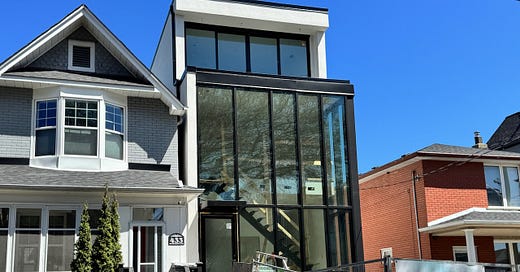



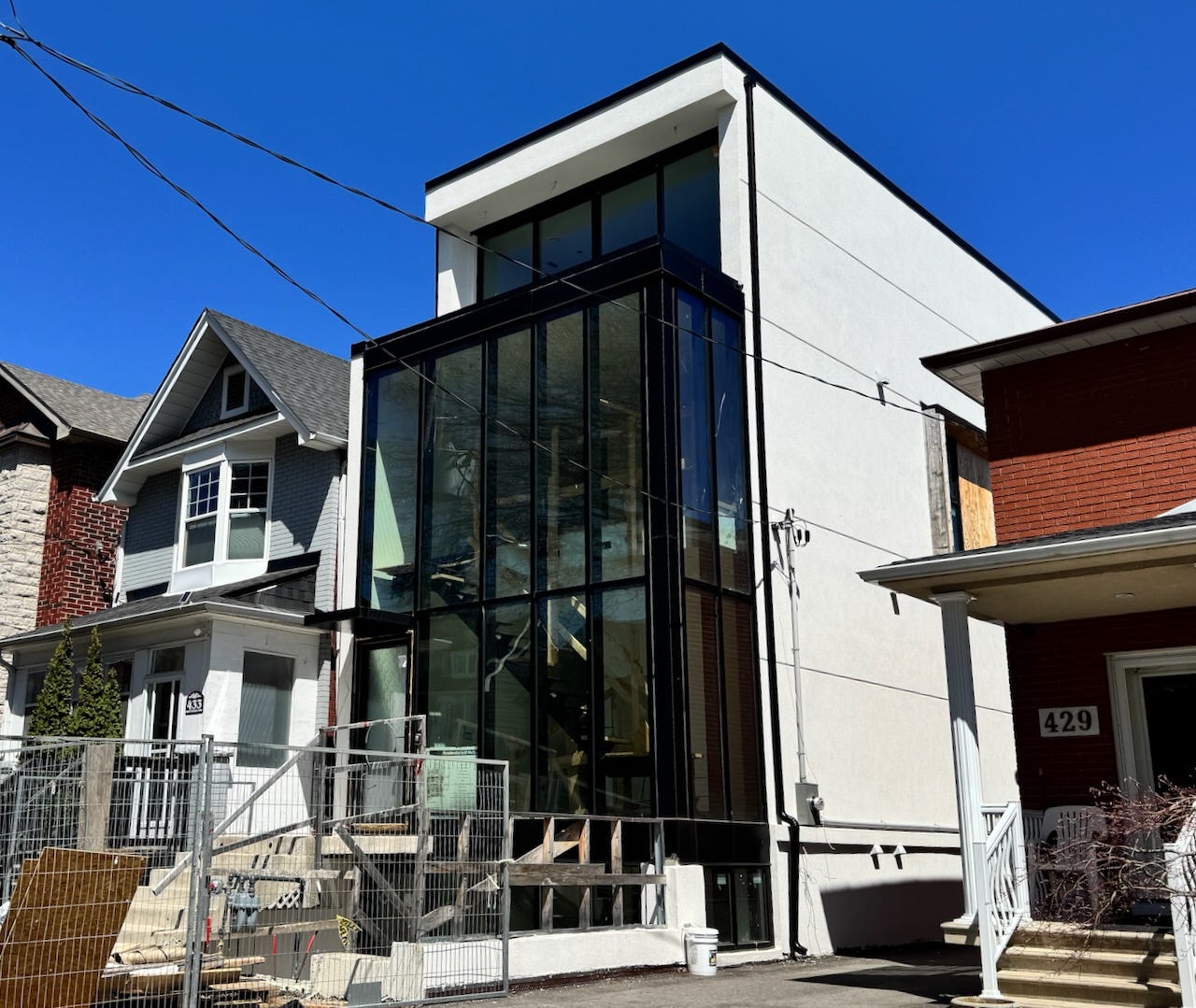
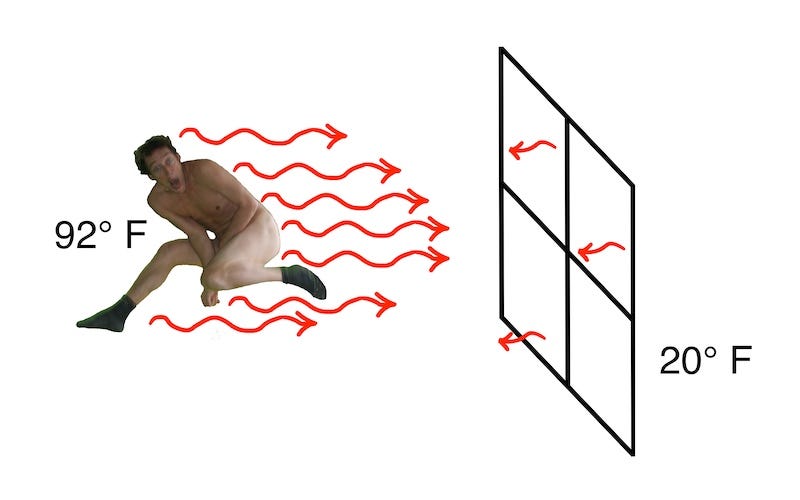
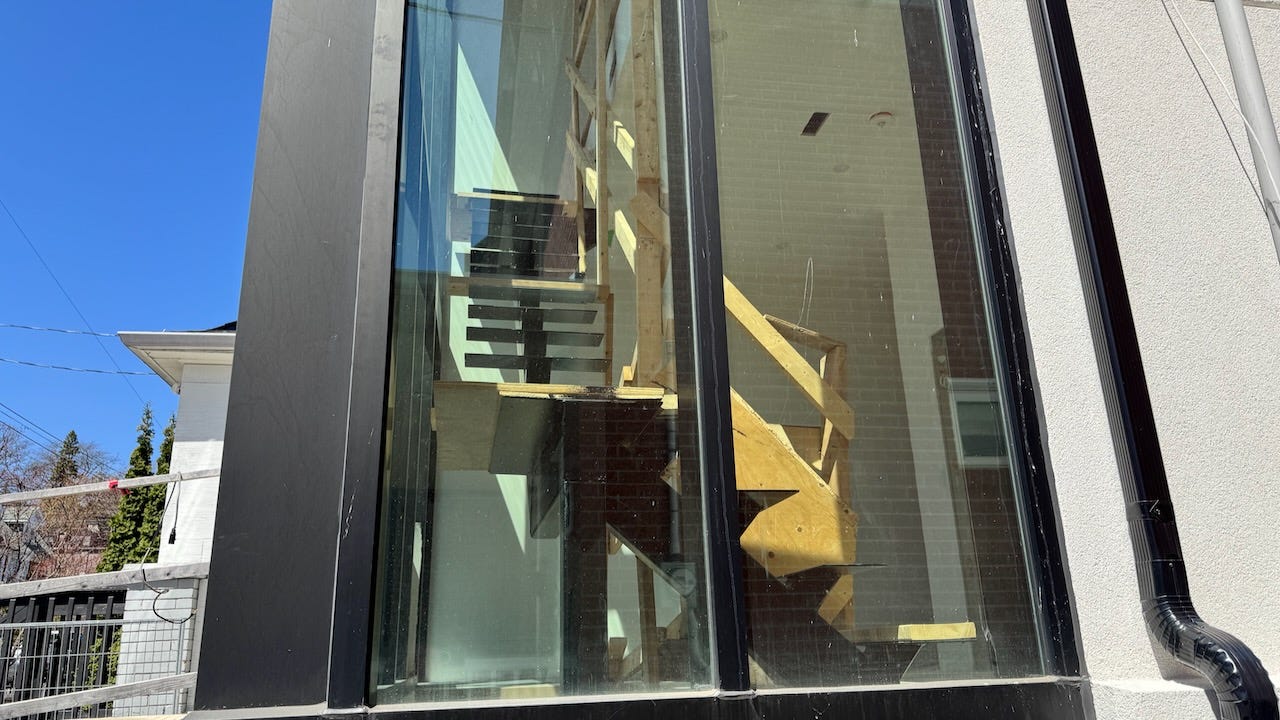
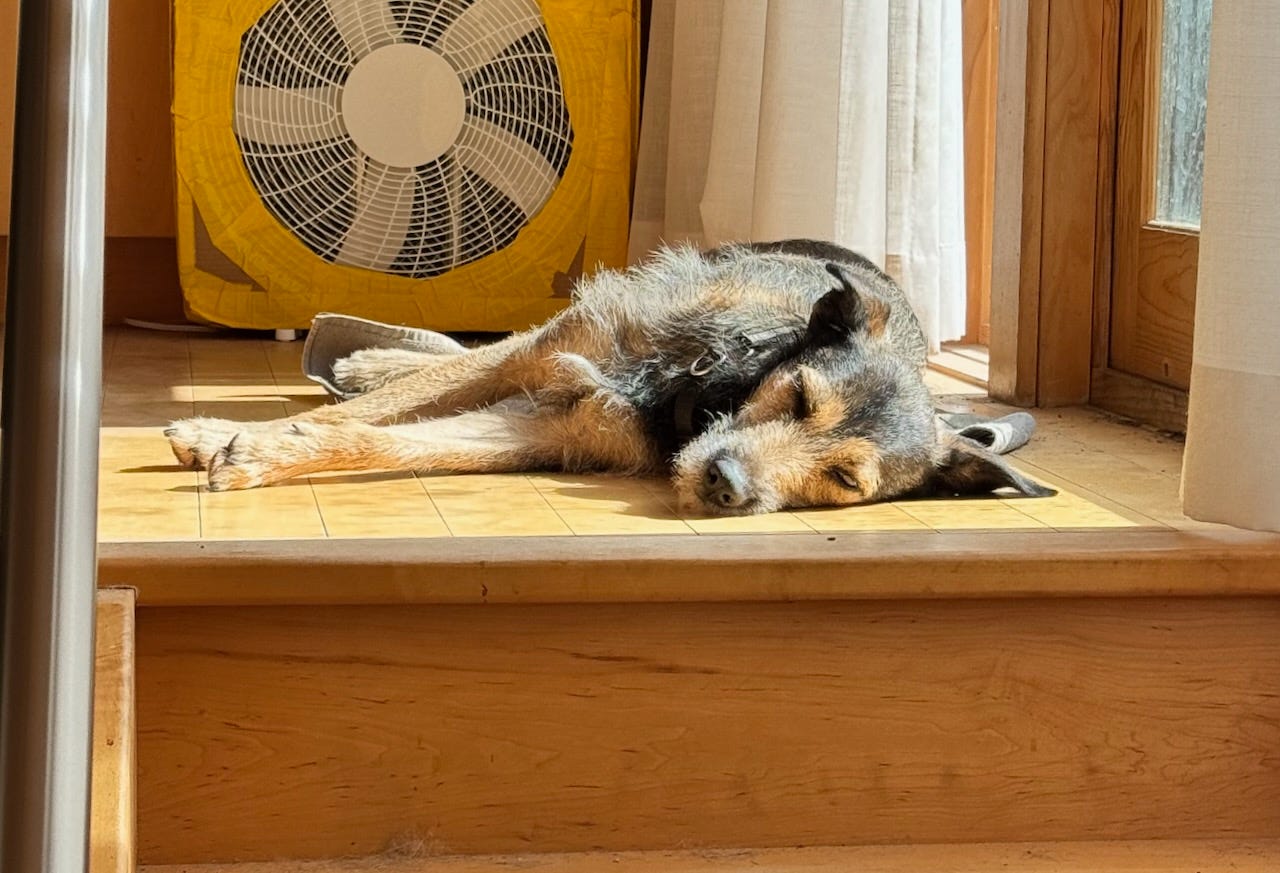
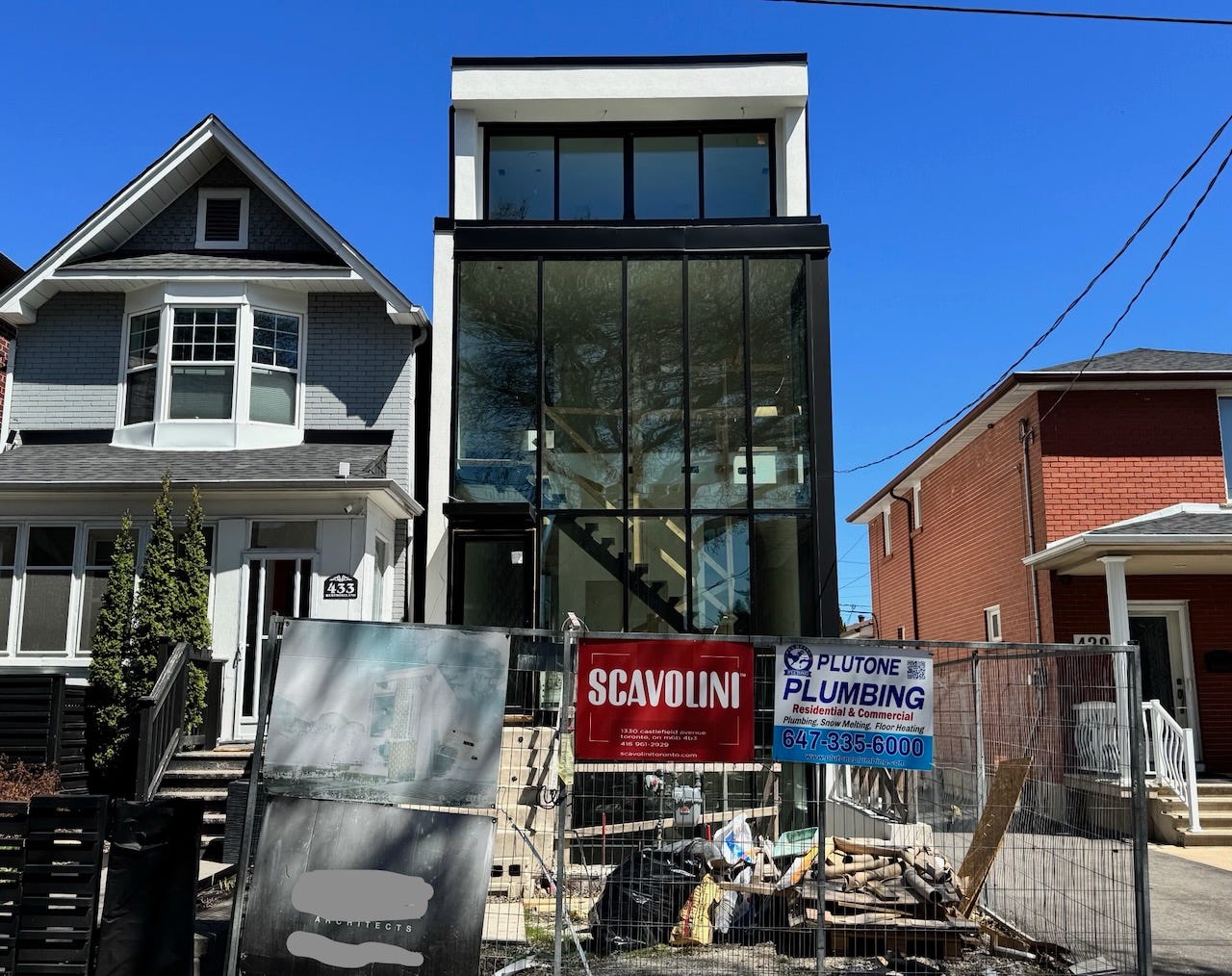

Why is it that the building code sets a series of minimum R-values that seem to be taken as maximums and the highway code sets a series of maximum speeds that seem to be taken as minimums?
Too many windows to clean is my first thought when I see a house with a lot of windows. I love cleaning my house, but I have limits, and I would not want to have a house like the one in the picture. Less is more for me.